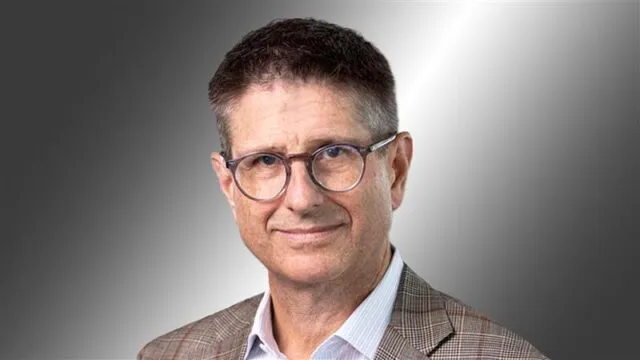The $29bn GMO Quality strategy is one of the few actively managed long-only strategies that has beaten MSCI World index in each calendar year for the past decade.
Unlike most quality strategies that underperformed during the 2022 bear market, the strategy held up well. Even more impressively – it continued outperforming during the tech-driven rebound of 2023 and 2024.
Tom Hancock, head of focused equity, who has been managing the fund since 2009, told FSA that the simplest way to describe the strategy’s approach is “we buy great companies, as long as there’s not too much hype”.
“It’s asking whether people are just too much in love with a stock, so is it hype? That is the spirit of the exercise,” he said. “I sometimes wonder if we make our process too complicated versus just asking ourselves that question.”
Before joining GMO, Hancock obtained a PhD in computer science from Harvard, worked as a software engineer at IBM and later a research scientist at Siemens.
Yet despite coming from a quantitative background, he suggested that some investors take too much comfort in complex financial projections when valuing stocks.
“There are a lot of numbers if you are projecting out financial statements, and you’re a little bit fooling yourself about the precision with which you can model those numbers out into the future very accurately,” he said.
Perhaps another reason the strategy has managed to stay ahead during the past decade, despite changing market conditions, is an emphasis on introspection and correcting biases in its investment approach.
For example, while valuation metrics are nevertheless important in deciding when to buy a stock, Hancock said it has proven to be less useful in determining when to sell it.
“Now we actually use value a little bit less in our process,” he said. “Generally, if we sold the stock because we decided it wasn’t high quality, we’re almost always right about those. With the valuation trades, our record is much spottier.”
Looking ahead
After years of outperformance, Hancock is most worried about making sure his strategy’s current winners aren’t becoming stale.
He said: “If we’re holding the same stocks that have won for five years, that puts a little bit of pressure on us to think about new ideas.”
“But momentum has historically worked in stock markets,” he added. “If a stock’s won for five years, it’s because there’s been some growth driver behind it that’s done better than people thought it would five years ago.”
“If that’s happened for five years, can that growth trend really continue for another five years? If it’s a cyclical industry, no. If it’s at the early stage of a technology inflection, it probably can.”
This thinking really came into practice during 2016 when the strategy started to shift its focus away from core quality stocks in the consumer staples sector which had outperformed for decades.
“We used to be one of those old school quality managers…but we were able to make the transition to owning a lot of the tech growth compounders,” Hancock said.
He praised his investment team’s ability to blend quantitative investing with fundamental investing in its portfolio construction.
“It’s hard for human portfolio managers to change their biases; that’s the advantage of a quant – it doesn’t have biases.”
There was a point in time in the mid-2010s when many investors believed technology was evolving so quickly that most tech firms risked becoming obsolete very quickly.
“But the numbers were saying they were just sustaining profitability,” Hancock said.
“That was the transition from a hardware dominated industry to software, which is just a more sticky and more profitable business model and the quant sort of said ‘hey, pay attention to this’ which forced us to do the digging and around 2016 we started to make a bigger allocation to these types of companies.”
Despite still being a bellwether holding for many core-quality portfolios, the quant element is beginning to sour on the consumer staples sector, said Hancock.
The consumer staples sector, which used to be core quality, is not so profitable now because the power of brands is not what it used to be, he said.
Other opportunities
One area Hancock is more optimistic about is the healthcare sector, which has largely fallen out of favour after the post-pandemic hangover the industry faced.
“The part of the portfolio I feel best about for the next year is healthcare,” Hancock said. “If we drill down within healthcare, there’s the US managed care industry, which is a universe that does really well when no one’s talking about them.”
“These are consistent double-digit EPS growers that trade at high teens valuation multiples with high return on capital.”
He added: “The fundamentals are great, so they are quietly compounding out of the spotlight.”
Elsewhere, the strategy recently bought a stake in Dutch-headquartered semiconductor equipment supplier ASML, which has suffered in recent years due to geopolitical risks surrounding its China revenues.
In the past, the strategy hasn’t held the stock because the premium valuation it typically traded at did not seem justified compared with another semiconductor equipment firm, for example, LAM Research.
“They both, broadly speaking, have similar growth rates,” Hancock said. “Yes, ASML is the only one who do lithography, and they have that super strong moat. But LAM Research’s moat is pretty darn good, so there shouldn’t really be that big of a spread between them.”
One of ASML’s biggest customers Intel has been slowing down its investments into semiconductor equipment due to its own struggles, which has also weighed down on the outlook for ASML.
But Hancock’s long-term view is that this ultimately isn’t what matters for the company.
“Really what matters is how many smartphones people have, how often they need to upgrade them, how many GPUs are bought, and all the end use cases,” he said.
“If they’re all made at TSMC and not at Intel, or if Samsung gets in the game and they’re made there or someone else comes up, at the end of the day it doesn’t really matter that much for ASML. It’s all about the ultimate end markets.”

















